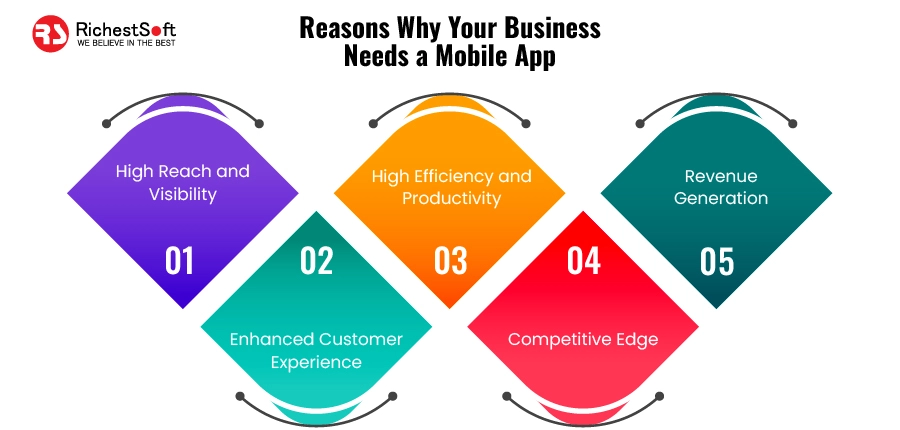Opportunities are everywhere. Some opportunities are small and don’t require many resources. Others are massive and need further analysis and evaluation.
One of your key responsibilities as a product manager is to evaluate the potential success of those opportunities before investing significant money, time, and resources. A feasibility study, also known as a feasibility assessment or feasibility analysis, is a critical tool that can help product managers determine whether a product idea or opportunity is viable, feasible, and profitable.
So, what is a feasibility analysis? Why should product managers use it? And how do you conduct one?
Table of contents
What is a feasibility study?
A feasibility study is a systematic analysis and evaluation of a product opportunity’s potential to succeed. It aims to determine whether a proposed opportunity is financially and technically viable, operationally feasible, and commercially profitable.
A feasibility study typically includes an assessment of a wide range of factors, including the technical requirements of the product, resources needed to develop and launch the product, the potential market gap and demand, the competitive landscape, and economic and financial viability.
Based on the analysis’s findings, the product manager and their product team can decide whether to proceed with the product opportunity, modify its scope, or pursue another opportunity and solve a different problem.
Conducting a feasibility study helps PMs ensure that resources are invested in opportunities that have a high likelihood of success and align with the overall objectives and goals of the product strategy.
What are feasibility analyses used for?
Feasibility studies are particularly useful when introducing entirely new products or verticals. Product managers can use the results of a feasibility study to:
- Assess the technical feasibility of a product opportunity — Evaluate whether the proposed product idea or opportunity can be developed with the available technology, tools, resources, and expertise
- Determine a project’s financial viability — By analyzing the costs of development, manufacturing, and distribution, a feasibility study helps you determine whether your product is financially viable and can generate a positive return on investment (ROI)
- Evaluate customer demand and the competitive landscape — Assessing the potential market size, target audience, and competitive landscape for the product opportunity can inform decisions about the overall product positioning, marketing strategies, and pricing
- Identify potential risks and challenges — Identify potential obstacles or challenges that could impact the success of the identified opportunity, such as regulatory hurdles, operational and legal issues, and technical limitations
- Refine the product concept — The insights gained from a feasibility study can help you refine the product’s concept, make necessary modifications to the scope, and ultimately create a better product that is more likely to succeed in the market and meet users’ expectations
How to conduct a feasibility study
The activities involved in conducting a feasibility study differ from one organization to another. Also, the threshold, expectations, and deliverables change from role to role.
For a general set of guidelines to help you get started, here are some basic steps to conduct and report a feasibility study for major product opportunities or features:
- Clearly define the opportunity
- Define the objective and scope
- Analyze technical feasibility
- Assess financial viability
- Evaluate potential risks
- Decide, prepare, and share
1. Clearly define the opportunity
Imagine your user base is facing a significant problem that your product doesn’t solve. This is an opportunity. Define the opportunity clearly, support it with data, talk to your stakeholders to understand the opportunity space, and use it to define the objective.
2. Define the objective and scope
Each opportunity should be coupled with a business objective and should align with your product strategy.
Determine and clearly communicate the business goals and objectives of the opportunity. Align those objectives with company leaders to make sure everyone is on the same page. Lastly, define the scope of what you plan to build.
3. Conduct market and user research
Now that you have everyone on the same page and the objective and scope of the opportunity clearly defined, gather data and insights on the target market.
Include elements like the total addressable market (TAM), growth potential, competitors’ insights, and deep insight into users’ problems and preferences collected through techniques like interviews, surveys, observation studies, contextual inquiries, and focus groups.
4. Analyze technical feasibility
Suppose your market and user research have validated the problem you are trying to solve. The next step should be to, alongside your engineers, assess the technical resources and expertise needed to launch the product to the market.
Dig deeper into the proposed solution and try to comprehend the technical limitations and estimated time required for the product to be in your users’ hands.
5. Assess financial viability
If your company hasa product pricing team, work closely with them to determine the willingness to pay (WTP) and devise a monetization strategy for the new feature.
Conduct a comprehensive financial analysis, including the total cost of development, revenue streams, and the expected return on investment (ROI) based on the agreed-upon monetization strategy.
6. Evaluate potential risks
Now that you have almost a complete picture, identify the risks associated with building and launching the opportunity. Risks may include things like regulatory hurdles, technical limitations, and any operational risks.
7. Decide, prepare, and share
Based on the steps above, you should end up with a report that can help you decide whether to pursue the opportunity or not. Either way, prepare your findings, including any recommended modifications to the product scope, and present your final findings and recommendations to your stakeholders.
Make sure to prepare an executive summary for your C-suite; they will be the most critical stakeholders and the decision-makers at the end of the meeting.
Feasibility study example
Imagine you’re a product manager at a digital software company that specializes in building project management tools.
Your team has identified a potential opportunity to expand the product offering by developing a new AI-based feature that can automatically prioritize tasks for users based on their deadlines, workload, and importance.
To assess the viability of this opportunity, you can conduct a feasibility study. Here’s how you might approach it according to the process described above:
- Clearly define the opportunity — In this case, the opportunity is the development of an AI-based task prioritization feature within the existing project management software
- Define the objective and scope — The business objective is to increase user productivity and satisfaction by providing an intelligent task prioritization system. The scope includes the integration of the AI-based feature within the existing software, as well as any necessary training for users to understand and use the feature effectively
- Conduct market and user research — Investigate the demand for AI-driven task prioritization among your target audience. Collect data on competitors who may already be offering similar features and determine the unique selling points of your proposed solution. Conduct user research through interviews, surveys, and focus groups to understand users’ pain points regarding task prioritization and gauge their interest in the proposed feature
- Analyze technical feasibility — Collaborate with your engineering team to assess the technical requirements and challenges of developing the AI-based feature. Determine whether your team has the necessary expertise to implement the feature and estimate the time and resources required for its development
- Assess financial viability — Work with your pricing team to estimate the costs associated with developing, launching, and maintaining the AI-based feature. Analyze the potential revenue streams and calculate the expected ROI based on various pricing models and user adoption rates
- Evaluate potential risks — Identify any risks associated with the development and implementation of the AI-based feature, such as data privacy concerns, potential biases in the AI algorithm, or the impact on the existing product’s performance
Feasibility study template
The following feasibility study template is designed to help you evaluate the feasibility of a product opportunity and provide a comprehensive report to inform decision-making and guide the development process.
Subscribe to our product management newsletter
Get articles like this to your inbox
Remember that each study will be unique to your product and market, so you may need to adjust the template to fit your specific needs.
- Opportunity description:
- Briefly describe the product opportunity or feature you’re evaluating
- Explain the problem it aims to solve or the value it will bring to users
- Business objectives and scope:
- Define the business goals and objectives for the opportunity
- Outline the scope of the product or feature, including any key components or functionality
- Market and user research:
- Summarize the findings from your market research, including data on the target market, competitors, and unique selling points
- Highlight insights from user research, such as user pain points, preferences, and potential adoption rates
- Technical feasibility:
- Detail the technical requirements and challenges for developing the product or feature
- Estimate the resources and expertise needed for implementation, including any necessary software, hardware, or skills
- Financial viability:
- Provide an overview of the costs associated with the development, launch, and maintenance of the product or feature
- Outline potential revenue streams and calculate the expected ROI based on various pricing models and user adoption rates
- Risk assessment:
- Identify any potential risks or challenges associated with the development, implementation, or market adoption of the product or feature
- Discuss how these risks could impact the success of the opportunity and any potential mitigation strategies
- Decision and recommendations:
- Based on your analysis, recommend whether to proceed with the opportunity, modify the scope, or explore other alternatives
- Provide a rationale for your recommendation, supported by data and insights from your research
- Executive summary:
- Summarize the key findings and recommendations from your feasibility study in a concise, easily digestible format for your stakeholders
Overcoming stakeholder management challenges
The ultimate challenge that faces most product managers when conducting a feasibility study is managing stakeholders.
Stakeholders may interfere with your analysis, jumping to conclude that your proposed product or feature won’t work and deeming it a waste of resources. They may even try to prioritize your backlog for you.
Here are some tips to help you deal with even the most difficult stakeholders during a feasibility study:
- Use hard data to make your point — Never defend your opinion based on your assumptions. Always show them data and evidence based on your user research and market analysis
- Learn to say no — You are the voice of customers, and you know their issues and how to monetize them. Don’t be afraid to say no and defend your team’s work as a product manager
- Build stakeholder buy-in early on — Engage stakeholders from the beginning of the feasibility study process by involving them in discussions and seeking their input. This helps create a sense of ownership and ensures that their concerns and insights are considered throughout the study
- Provide regular updates and maintain transparency — Keep stakeholders informed about the progress of the feasibility study by providing regular updates and sharing key findings. This transparency can help build trust, foster collaboration, and prevent misunderstandings or misaligned expectations
- Leverage stakeholder expertise — Recognize and utilize the unique expertise and knowledge that stakeholders bring to the table. By involving them in specific aspects of the feasibility study where their skills and experience can add value, you can strengthen the study’s outcomes and foster a more collaborative working relationship
Final thoughts
A feasibility study is a critical tool to use right after you identify a significant opportunity. It helps you evaluate the potential success of the opportunity, analyze and identify potential challenges, gaps, and risks in the opportunity, and provides a data-driven approach in the market insights to make an informed decision.
By conducting a feasibility study, product teams can determine whether a product idea is profitable, viable, feasible, and thus worth investing resources into. It is a crucial step in the product development process and when considering investments in significant initiatives such as launching a completely new product or vertical.
Source link






Leave a Reply